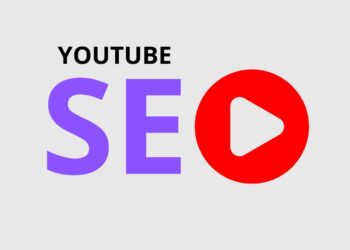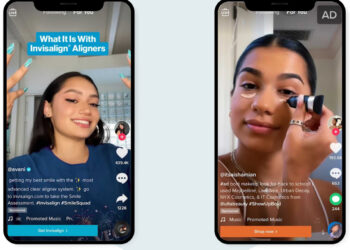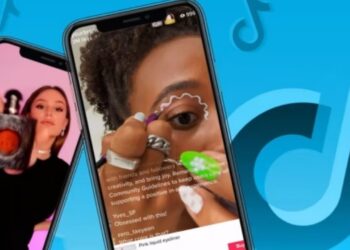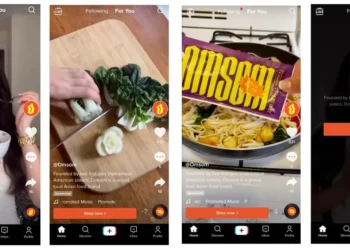In today’s fast-paced world of marketing and advertising, capturing the consumer’s attention and converting it into concrete action remains a perpetual challenge. This is where the AIDA method, a classic framework that has guided marketing strategies for over a century, proves invaluable.
AIDA, which stands for Attention, Interest, Desire, and Action, is a potent formula designed to guide consumers on a persuasive journey from initial brand contact to making a purchase decision.
This model has not only withstood the test of time but has also adapted to changes in consumer landscapes and technology, proving its effectiveness in a variety of contexts from traditional print ads to today’s digital campaigns.
Throughout this article, we will explore each stage of the AIDA method, providing a deep understanding of how each element can be utilized to enhance marketing campaigns, with practical examples and case studies illustrating its success.
For marketers looking to maximize the impact of their campaigns, understanding and applying the AIDA method is crucial for effectively connecting with the audience and driving tangible results.
What is the AIDA Method?
The AIDA method is one of the fundamental pillars of marketing and advertising, used to structure effective communications that lead the consumer to take action. The acronym AIDA stands for four crucial stages in the consumer persuasion process: Attention, Interest, Desire, and Action. Each stage is designed to guide the consumer through a logical and emotional journey, culminating in a purchase decision or another form of conversion.
History and Evolution of the Model
The concept of AIDA was first introduced in the late 19th century by E. St. Elmo Lewis, a pioneer in the field of marketing. Lewis developed this model to explain how personal ads should capture readers’ attention and lead them to take action. Since then, the model has expanded beyond print advertising, adapting to innovations in digital marketing, television, and radio, maintaining its relevance in an ever-evolving media environment.
The effectiveness of the AIDA method lies in its simplicity and flexibility, allowing marketers to create persuasive messages that resonate across different platforms and contexts. Let’s explore each of these stages in detail:
- Attention: This is the capture phase. The goal is to grab the audience’s attention with a message that stands out amidst content saturation. This can be achieved through striking visuals, impactful headlines, or intriguing message starts.
- Interest: After capturing attention, the next step is to maintain and deepen the audience’s interest. This is usually done by providing additional information that is relevant and valuable to the target audience, such as product details, benefits, or intriguing data.
- Desire: The transition from interest to desire involves creating an emotional appeal. Marketers use techniques to make the audience not just like a product or service but feel a real need to possess it. This is often achieved by highlighting the emotional or unique benefits of the product.
- Action: The final stage is to encourage a specific action. This could be a purchase, signing up for a newsletter, sharing content on social media, or any other conversion goal. Here, it is crucial to offer a clear call to action (CTA) that directs the consumer on what to do next.
By effectively understanding and implementing each of these stages, marketers can create campaigns that not only capture attention but also motivate consumers to act, thereby maximizing the return on investment in their marketing activities.
Attention: Capturing the Consumer’s Eyes
The first stage of the AIDA method, “Attention”, is crucial for the success of any marketing campaign. At this stage, the goal is to capture the audience’s attention amid an ocean of distractions. With content saturation on all platforms, standing out becomes not just a challenge, but a pressing necessity for brands.
Strategies for Capturing Attention
The key to capturing attention is to create an attractive entry point that stops the audience in their tracks. This can be achieved through several methods:
- Impactful Visuals: Images, videos, and graphics that stand out are extremely effective in attracting attention. They should be not only visually appealing but also relevant to the message you want to convey.
- Attractive Headlines: The headline is often the first thing a consumer reads. A good headline should be intriguing, clear, and promise immediate value to encourage the consumer to want to learn more.
- Intriguing Message Start: The first lines of any content should be designed to hook the reader. Rhetorical questions, surprising statements, and fascinating data can be used to pull the reader into the content.
- Importance of the First Seconds in Advertising
In digital environments, the first few seconds of exposure can determine whether a user will remain engaged or not. For example, on video platforms like YouTube, the first 5 seconds are critical because it’s the minimum that many users watch before deciding to skip an ad. Therefore, placing the most attractive elements at the beginning of the content can mean the difference between making a lasting impact and being ignored.
Practical Examples
Let’s consider some successful campaigns that used effective techniques to capture attention:
Impactful Visual Campaigns:
Nike: The brandoften uses powerful images of athletes in action, which not only capture attention but also evoke the emotion and aspiration associated with sports and personal achievement.
Ads with Strong Headlines:
Apple: Apple is known for its concise and impactful slogans like “Think Different” that not only capture attention but also summarize the brand’s philosophy.
Captivating Message Starts:
BuzzFeed: Known for its attractive headlines and easily digestible content, BuzzFeed often uses numbers and questions to make readers click to read more.
When planning campaigns, considering these elements from the start can ensure that your content not only reaches your audience but also engages them meaningfully from the first contact. Attention strategies are the foundation upon which the rest of consumer interaction is built, making it essential to get this initial phase right.
Interest: Keeping the Audience Engaged
After capturing the audience’s attention, the next step in the AIDA method is to maintain and cultivate that interest. This stage is crucial because it transforms a casual viewer into a potential customer, engaging them with content that resonates with their needs and desires.
Techniques for Maintaining Consumer Interest
Maintaining someone’s interest amid constant distractions requires a careful and strategic approach. Here are some effective techniques:
Relevant and Educational Content: Provide information that adds genuine value to your audience. This can include tutorials, useful data, or insights that help the consumer better understand how your product or service can solve their problems.
Engaging Narrative: Stories are a powerful way to keep the audience interested. Narratives that emotionally connect with viewers can transform a generic campaign into a memorable experience.
Interactivity: Engage the audience with surveys, quizzes, or opportunities for feedback. Interactivity not only keeps people involved but can also provide valuable insights into their preferences and behaviors.
The Role of Informative and Relevant Content
Information that is directly relevant to the audience not only maintains interest but also establishes brand credibility. When consumers see that a company understands their concerns and can speak directly to them, trust increases, paving the way for a more enduring relationship.
Case Study: Analysis of a Successful Campaign
An excellent example of a campaign that maintained public interest is Blendtec’s “Will It Blend?” video series. These videos show the company’s founder using their blenders to grind various objects, from golf balls to smartphones. This approach was not only fun and educational, showing the power of the products, but also extremely relevant to anyone interested in the durability and efficacy of a blender.
Content Strategies for Different Platforms
Different platforms require different strategies to maintain interest:
- Instagram and Facebook: Visual posts with captivating captions or engaging stories work well here. Contests and calls to action can increase interaction.
- YouTube: Tutorial videos or detailed demonstrations can capture and maintain interest by educating viewers while showing the product in action.
- Blogs and Articles: Longer, detailed content that addresses specific problems or offers solutions can keep the reader engaged and coming back for more.
When developing content to maintain audience interest, it’s crucial to consider not only what you are presenting, but how and where you present it. Understanding the nuances of each platform allows for more effective communication and, consequently, deeper and more meaningful engagement with the audience.
Desire: Transforming Interest into Need
Once interest is captured and maintained, the next step in the AIDA method is to transform that interest into desire. This phase is about creating an emotional connection with the consumer, making them feel a deep need or desire for the product or service offered.
Difference Between Interest and Desire in the Consumer Journey
While interest can be seen as a rational attraction or curiosity about a product, desire involves a deeper emotional level. Interest says “this seems useful”, while desire says “I need this”. The key to generating desire is to touch on the consumer’s emotions, showing how the product or service can significantly improve their lives or solve a persistent problem.
How Brands Create Desire
- Emotional Benefits: Brands often focus on the emotional benefits of their products, not just the features. For example, a perfume ad might focus less on the ingredients and more on the sensation of sophistication and attraction it provides.
- Testimonials and Success Stories: Seeing others who have achieved success or happiness with a product can create a powerful sense of desire. Authentic testimonials and real customer case studies are valuable tools.
- Exclusivity and Scarcity: Products that are perceived as limited or exclusive naturally generate more desire. Tactics such as time-limited offers or special editions can encourage consumers to act quickly so as not to miss out.
- Example of Effective Strategies that Stimulate Desire
An effective campaign that exemplifies the creation of desire is Apple’s iPhone launches. Apple not only focuses on the technical specifications; it presents each new model as an icon of design and innovation that you must own to stay ahead. The combination of sophisticated design, technological innovations, and a strong user community creates an intense desire among consumers to be part of this exclusive group.
Product Staging
Another effective strategy is staging the product in situations that resonate emotionally with the target audience.
For example, a watch brand might show its products being used by adventurers in exotic locations, suggesting that buying the watch could be the first step in your own adventure.
Desire Through Brand Values
Moreover, brands that align their products with social or environmental values can create desire in consumers who value these causes. Products that promise sustainability, for example, can generate desire in environmentally conscious consumers.
Transforming interest into desire is essential for moving consumers closer to the final action of purchase. By focusing on the emotions and values of the consumer, brands can effectively turn products from mere objects of interest into indispensable items of desire.
Action: Encouraging Conversion
The last phase of the AIDA method is ‘Action’, where the goal is to drive the consumer to make a concrete decision and carry out a specific action, whether it’s a purchase, a sign-up, or another type of desired conversion. This step is crucial, as this is where all previous marketing efforts are converted into tangible results.
How to Induce the Consumer to Take Action
To effectively motivate action, it’s essential to provide a clear and easy path to conversion. Here are some strategies:
- Clear and Visible Calls to Action (CTAs): CTAs should be obvious and specific, guiding consumers on what to do next. Phrases like “Buy now”, “Sign up for free”, or “Download here” eliminate any ambiguity about how to proceed.
- Time-Limited Offers and Incentives: Special offers, time-limited discounts, or giveaways can create a sense of urgency that encourages consumers to act immediately.
- Simplified Processes: Reducing the number of steps needed to perform an action can significantly increase conversion rates. For example, simplifying the checkout process on an e-commerce site can reduce cart abandonment rates.
Importance of Clear and Appealing Calls to Action
An effective CTA should be both persuasive and informative. It should highlight the benefit the consumer will gain by performing the action, and be positioned prominently so as not to be lost in the content. Additionally, testing different versions of a CTA can help identify which one resonates best with the target audience.
Examples of Effective CTAs
Amazon: “Add to Cart” and “Buy Now” are highly visible buttons strategically placed on each product page, facilitating quick purchases.
Netflix: “Watch a month free” not only offers a free trial but also suggests an immediate action with a clear reward.
Adjusting Actions to Audience Expectations
Understanding your audience is crucial for formulating an effective CTA. What works for a young, tech-savvy audience might not be effective for older consumers or those less familiar with technology. For example, CTAs that work well on social media platforms may need to be adapted for a more formal format in emails or websites.
Monitoring and Optimization
Finally, monitoring the performance of different CTAs and adjusting strategies as needed is vital to maintaining the effectiveness of campaigns. Analytical tools can help track which CTAs are generating more conversions and which may need adjustments.
By ensuring that the action phase of the AIDA method is implemented with clear and focused strategies, brands can maximize their chances of conversion, closing the marketing cycle efficiently and effectively.
Applications of the AIDA Method Beyond Marketing
While the AIDA method is a classic tool in marketing and advertising, its applicability extends far beyond these areas. This model can be adapted to enhance communication and persuasion in various other disciplines, including personal sales, business presentations, and even writing content for social media. Exploring these applications can offer new perspectives and techniques for professionals in different sectors.
Personal Sales
In the context of direct sales, the AIDA method is crucial for guiding an effective sales conversation. By capturing the client’s attention with an impactful introduction, maintaining their interest with relevant information about the product, creating a desire through the demonstration of benefits, and finally inducing action with an attractive proposal, salespeople can significantly increase their conversion rates.
Business Presentations
For corporate presentations or investment pitches, the AIDA method can structure the speech to keep the audience engaged. Starting with a hook that captures attention, such as a surprising statistic or a brief story, follows up to explain the value of the project or product, creating a desire by highlighting potential returns or competitive advantages, and concludes with a clear call to action, such as an invitation for partnership or investment.
Online Advertising and Social Media
In the digital age, each social media post or blog content can benefit from employing the AIDA method to engage readers and motivate specific actions. From increasing website traffic to promoting interactions like likes and shares, the conscious application of each stage of AIDA can transform simple contents into powerful engagement tools.
AIDA in Social Media
Adapting AIDA for social media involves understanding how to quickly capture the user’s attention, maintain it with valuable content, transform that attention into legitimate interest, and then motivate an action, such as participating in a promotion or signing up for an event. This requires a deep understanding of user behavior on each platform and the creation of messages
adjusted for those behaviors.
Conclusion
The AIDA method is much more than a simple marketing formula; it is a powerful communication tool that has been used by generations to capture attention, build interest, arouse desire, and induce action. Its durability and effectiveness over time are testimonies to its relevance in a world where the ability to influence and persuade defines the success of individuals and organizations.
Through this article, we explored each stage of the AIDA method, highlighting not only its applications in traditional advertising campaigns but also how it can be adapted for situations such as personal sales, business presentations, and interactions on social media. The strategies discussed here serve as a guide for any professional looking to improve their ability to communicate effectively and achieve tangible results, whatever the channel or context.
By implementing the AIDA method, professionals can ensure that their messages not only reach their audiences but also move them towards a desired action. It is this ability to convert interest into concrete action that makes AIDA an indispensable tool in the arsenal of any communicator.
We encourage all professionals, from marketers to entrepreneurs, to experiment and adapt the AIDA method to their specific needs. By doing so, you may discover new ways to engage and convert your audience, making the most of the potential of your communications.
In a world where attention is a precious currency, and competition for that attention is fierce, the AIDA method offers a tried and true approach that can help highlight your message and ensure that it is not only heard but also inspires action.











Comments 2